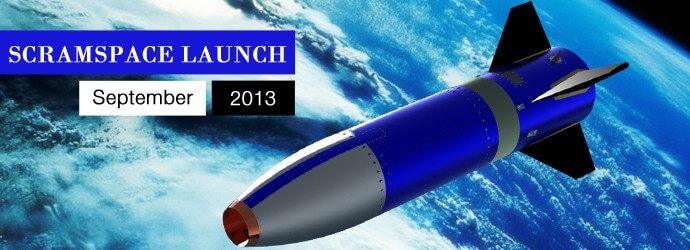Australia’s hypersonic scramjet has arrived safe in Norway, where the team will prepare it for its 8600km/h “hypersonic swan-dive” from the edge of space.
The SCRAMSPACE research project led by The University of Queensland is scheduled to launch on a day between September 15 and 21, subject to weather and testing.
SCRAMSPACE Director and Chair for Hypersonics at UQ Professor Russell Boyce said the shipment to the launch site in Norway was an important step towards the much-anticipated launch of the $14 million research project.
“The payload arrives this week and the plan is for work to commence at the range on Monday 9 September, with a full rehearsal on Saturday 14 September,” Professor Boyce said.
The international research team of 13 partners and sponsors (below) involved is primed for take-off.
“We are extremely excited about the potential impact of the data that could come out of this test flight,” Professor Boyce said.
“This is a three-year, $14 million project with the potential to deliver solutions for making sending satellites into space cheaper and more efficient.
“The team can’t wait to get started,” he said.
The scramjet will be launched at Andøya Rocket Range, 300km north of the Arctic Circle.
Following launch, the spacecraft will reach an altitude of 320 kilometres, powered by a two-stage rocket. After leaving the atmosphere, the scramjet vehicle will separate from the rocket and, using small thrusters, orient itself for the re-entry for what SCRAMSPACE design engineer Paul Van Staden describes as a “hypersonic swan dive”.
During the return flight, gravity will accelerate the vehicle to Mach 8 – about 8600km/h. This is when the team will collect the most valuable data, before the scramjet self-destructs over the sea as planned.
The data will give insights into hypersonic physics, hypersonic combustion, performance of materials and components, and how these vehicles will fly in future.
Professor Boyce said the scramjet had the potential to solve international aerospace challenges, and to maintain Australia’s position as a world leader in scramjet research.
“As part of the Australian Space Research Program, this project supports Australia’s access to space, as helps build the talent pool of engineers, scientists and specialists we need to do it,” he said.
UQ is further supporting this talent pool by including hypersonics among the University’s first four Massive Open Online Courses, which are offered free on the internet through the edX consortium.
As well as leading one of the world’s fastest research projects, The University of Queensland has proven its research excellence is also responsible for one of the world’s slowest – the Pitch Drop Experiment.
Other UQ research successes include cervical cancer vaccine Gardasil, a research centre to create cheaper fuel from algae, Australia’s largest rooftop PV solar installation, addressing global change, food security, and developed titanium fabrication technology for aerospace materials.


